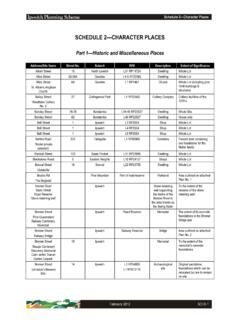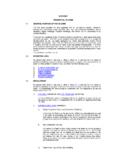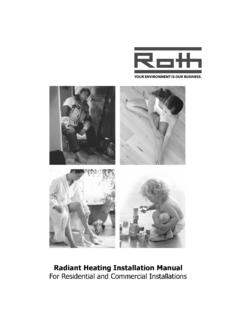Transcription of Division 6—Residential Code - Planning & …
1 Part 12, Div 6 residential code January 2006 12-63 Division 6 residential residential code The provisions in this Division comprise the residential code . They are compliance with the residential code (section ); overall outcomes for the residential code (section ); specific outcomes, acceptable solutions and probable solutions as follows residential uses and works effects of development general provisions (section ); effects of development for specific residential uses (section ). Compliance with the residential code Development that, in the local government s opinion is consistent with the specific outcomes in sections and complies with the residential code .
2 Overall Outcomes for the residential code (1) The overall outcomes are the purpose of the residential code . NOTE Sub-section (1) provides the link between the overall outcomes sought for the code and the IPA code assessment rules which refer to the purpose of the code [see IPA (2)]. (2) The overall outcomes sought for the residential code are the following (a) residential uses and works (i) create a pleasant, safe and attractive living environment; (ii) maintain, and where possible enhance, residential amenity both internal and external to the site; (iii) blend new development into existing streetscapes and neighbourhoods; (iv) conserve places of cultural significance or streetscape value; (v) promote greater housing choice with sufficient flexibility to accommodate the diverse housing needs of the community; and (vi) provide for privacy, day lighting, ventilation and natural climate control. (b) The character, scale and density of development are (vii) commensurate with the intent of the zone or Sub Area in which the development is proposed; (viii) compatible with the physical characteristics of the site and its surrounds; and (ix) compatible with the desired character of the local area.
3 residential Uses and Works 0 Effects of Development General Provisions Density and Character (1) Specific Outcomes Uses and works reflect the desired built character, maintain amenity and protect and enhance important townscape and landscape elements having regard to (a) dwelling density; (b) building height; (c) lot sizes and dimensions; (d) boundary clearances and the provision of space around buildings; (e) the location and design of parking areas; (f) the provision of recreation space; (g) access to natural light and ventilation; (h) privacy; (i) noise attenuation; (j) vegetation protection; (k) landscape treatment; (l) places of cultural significance or streetscape value; and (m) the form, scale, bulk, style, siting, orientation, roof lines, materials and detailing of buildings. Part 12, Div 6 residential code 12-64 February 2017 (2) Probable Solutions for sub-section (1) Dwelling Density, Height and Setbacks (a) The dwelling density, height and setbacks conform to those specified for the relevant zone, Sub Area or precinct.
4 Building Height (b) Where no building height provisions are specified for the zone, sub area or precinct, buildings are limited to one (1) storey in height, unless appropriate with (i) the scale of adjoining development; and (ii) the extent of fall across the site; and (iii) the character and amenity of the area and the overall townscape. Building Setbacks (c) Where no building setbacks are specified for the zone, sub area or precinct, the building setbacks conform to Part 12, Division 16. (d) Windows in habitable rooms do not face directly into habitable rooms in another dwelling on the same site closer than nine (9) metres except that at ground level such minimum separation may be (iv) three (3) metres where screen fences or walls are provided or where the windows are above metres from the floor; and (v) six (6) metres where existing vegetation or new plantings prevent views between windows. NOTE (1) Separate provisions have been established for special character areas and character places.
5 (2) Refer (a) Part 4 Urban Areas, Division 7 Character Areas Housing Zone and Division 14 Character Areas Mixed Use Zone; (b) Part 8 Rosewood, Division 6 Character Areas Housing Zone; (c) Part 9 Townships, Division 5 Township Character Housing Zone and Division 6 Township Character Mixed Use Zone; (d) Part 11 Overlays, Division 3 Character Places Overlay; and (e) Part 12 Codes, Division 10 Character code . Building Scale and Articulation (3) Specific Outcomes (a) Building design, detailing and finish provide an appropriate scale to the street and add visual interest and differentiation between residential buildings when viewed from streets, or a public thoroughfare. (b) In low density residential areas, new residential buildings are designed with clearly distinguishable parts of similar scale to existing dwellings. (c) Large expanses of blank walls are avoided, particularly in situations where such walls are likely to be visually prominent.
6 (d) New buildings take into account the image presented by the backs and sides of buildings so as to ensure an attractive townscape. (4) Probable Solutions for sub-section (3) (a) Building street facades do not exceed (i) 14 metres in length within a 20 metre wide frontage; (ii) 10 metres in length within a 15 metre wide frontage; or (iii) 7 metres in length within a 10 metre wide frontage. (b) Building wall lengths in excess of 15m are articulated by use of verandahs, balconies, bay windows, window hoods or wall offsets (minimum 1m deep), or physical separation into detached buildings. (c) Buildings are detailed or articulated to enable individual dwellings to be identified from public streets and communal areas. Building Orientation (5) Specific Outcomes (a) Buildings address the street frontage or frontages rather than being aligned at right angles or diagonal to the street. Part 12, Div 6 residential code January 2006 12-65 (b) Buildings are designed so that overlooking and opportunities for casual surveillance of public spaces, pedestrian paths and car parking areas are provided.
7 (c) Generally, as much as practical of the habitable parts of a building are located towards the street, in order to develop a strong relationship between private accommodation and the street. (d) Buildings are sited and designed to provide a clearly delineated transition space from public spaces ( the street or communal open space) to dwellings and associated private use areas. (e) The site layout ensures that the front entrance of each dwelling is easily found, and that amenity is maintained between dwellings. (6) Probable Solutions for sub-section (5) (a) There are no blank walls along street frontages. (b) Habitable rooms of dwellings that are located near the street frontage are oriented towards the street, and have verandahs or balconies adjoining, or oriented to the street. Corner Sites (7) Specific Outcomes NOTE (1) Corner sites are of particular importance owing to their visual prominence within the grid pattern of streets.
8 (2) Accordingly, the quality of the design of buildings on corner sites will have a significant impact on the achievement of the City s desired character. Buildings on corner sites (a) contribute to the clear definition of the street intersection and entrances to the building; (b) address both street frontages, in terms of (i) orientation of habitable rooms; and (ii) location of balconies, verandahs and entrances; and (c) use high quality, appropriate materials and detailing. Building Entrances (8) Specific Outcomes (a) Entries to buildings are exposed to the main street frontage and are clearly delineated/legible. (b) Building identification and numbering is prominent. (c) Entrances to buildings are emphasised by (i) a size of entrance of an appropriate scale and presence on the street; and (ii) use of high quality materials and high levels of detailing around the entrance. Skyline Elements/Roof Top Design (9) Specific Outcomes NOTE (1) Careful attention to design details is required if the unique skyline and visual character of the City is to evolve sympathetically.
9 (2) Special attention needs to be given to the design of roof forms and the location and concealing of plant and equipment. (3) The design of rooftops and projections is to be treated as an integral part of the building envelope design. (a) The design of the roof form is consistent with the predominant existing character or the desired character of roofs in the area. (b) The design of roof forms ensure that (i) plant rooms and equipment are appropriately concealed; and (ii) appropriately coloured roof treatments are used and contrasting coloured roof treatments are avoided. Building Materials (10) Specific Outcomes (a) External materials are high quality, attractive, durable and need minimal maintenance. (b) Use of highly reflective materials in facades or on roofs ( unpainted zincalume) is avoided or limited to locations where they do not detract from the amenity and character of adjacent development and public or semi-public spaces.
10 Part 12, Div 6 residential code 12-66 January 2006 (c) Colours are used to unify buildings which form part of a group, and colour schemes are appropriate to the style of the building. (d) Previously unpainted surfaces are not painted where the original finish ( face brickwork) is an important part of the building s character. Site Amalgamation (11) Specific Outcomes Where the site for the proposed development comprises more than one lot, all lots are amalgamated by survey into one parcel prior to the submission of an application for the approval of building works. Site Suitability and Amenity (12) Specific Outcomes (a) residential uses or works are designed and sited to maximise site potential, minimise risk and provide a high degree of amenity in a residential environment, suited to the community s needs.










